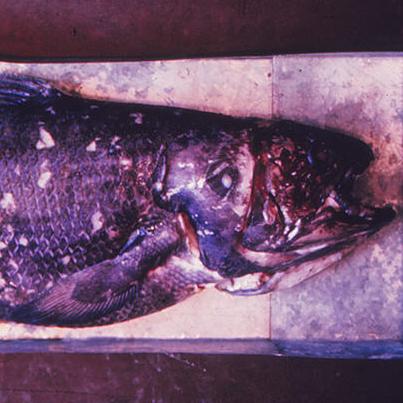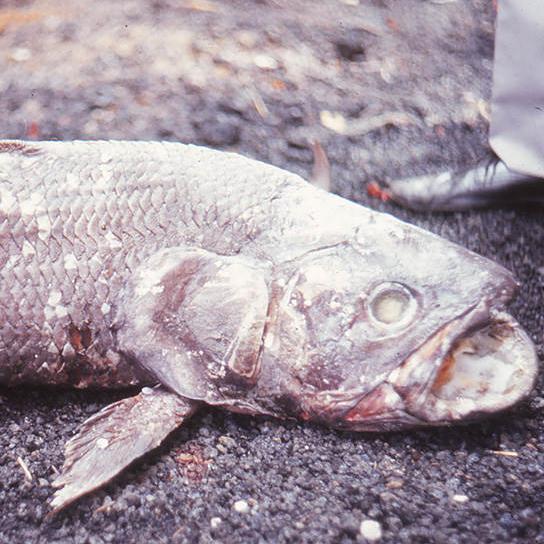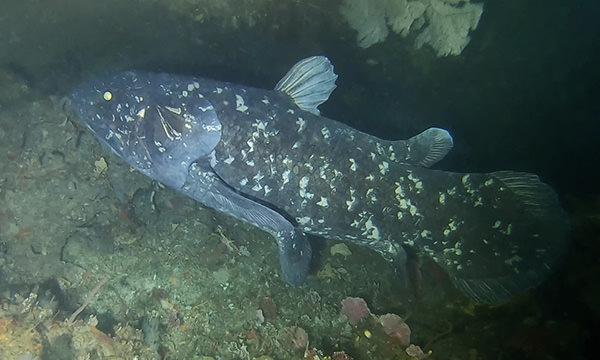The ichthyology collection in the Division of Vertebrate Zoology includes 2 specimens of Latimeria, the coelacanth, collected from the Comoro Islands.
Certain groups of fishes have remained virtually unchanged for millions of years. They are living fossils, bridging the gap between fish and tetrapods (four-limbed vertebrates). The evolutionary history of tetrapods includes critical stages between aquatic and terrestrial species. The exact relationship of many of these fishes to the rest of the vertebrate family tree is debated, and often confusing. Some seem more closely related to amphibians than to other fish. Many have no close living relatives. Studies at the Yale Peabody Museum, including by Keith Stewart Thomson, have improved our understanding of the biology and evolutionary history of these unique fishes.
The coelacanth (Latimeria chalumnae) is one of those fishes. Along with the lungfishes, it may be among the major species groups that could represent the junction between aquatic and terrestrial vertebrate life.
Although familiar to local fishermen, before the 1930s the coelacanth was known in the West only from fossil specimens and was thought to be extinct. Its rediscovery in the Indian Ocean resulted in many significant studies of vertebrate evolution. The Peabody’s coelacanth specimen was probably the first available to researchers in the United States as an unpreserved specimen. Other specimens have been collected by scientists in the decades since, along with visual documentation of living individuals.



